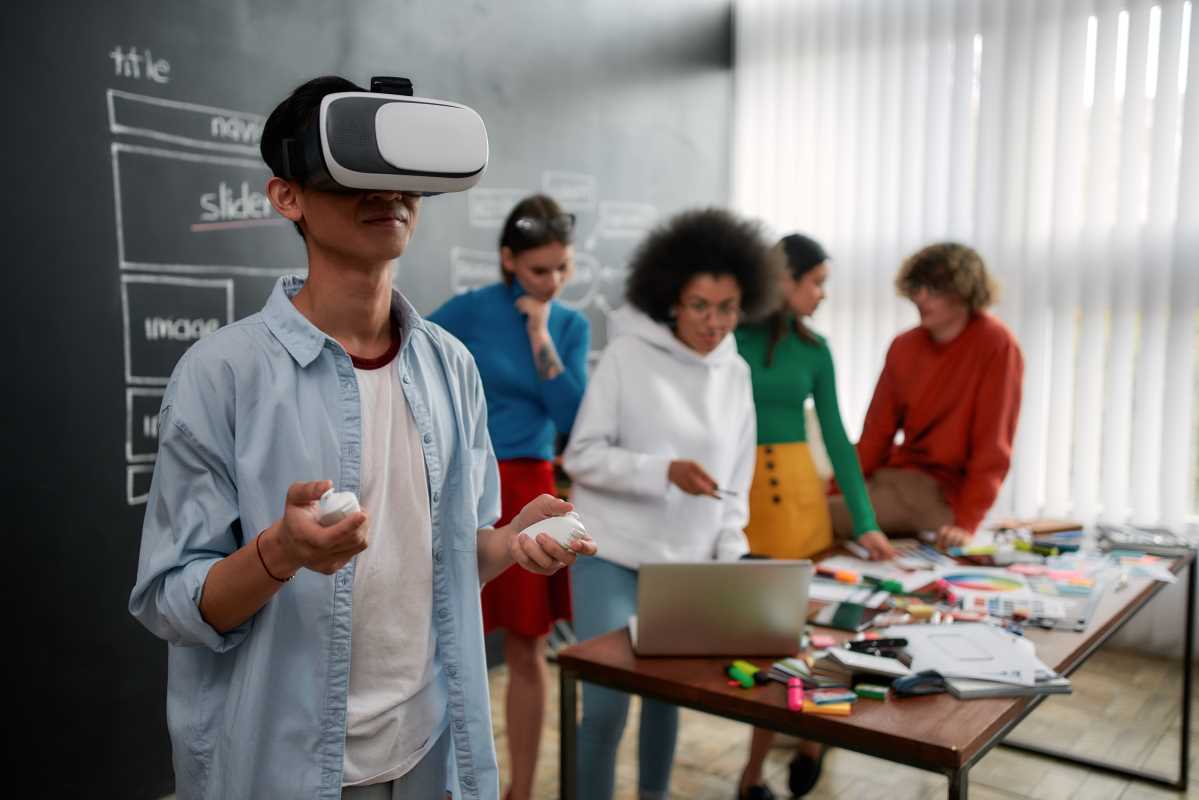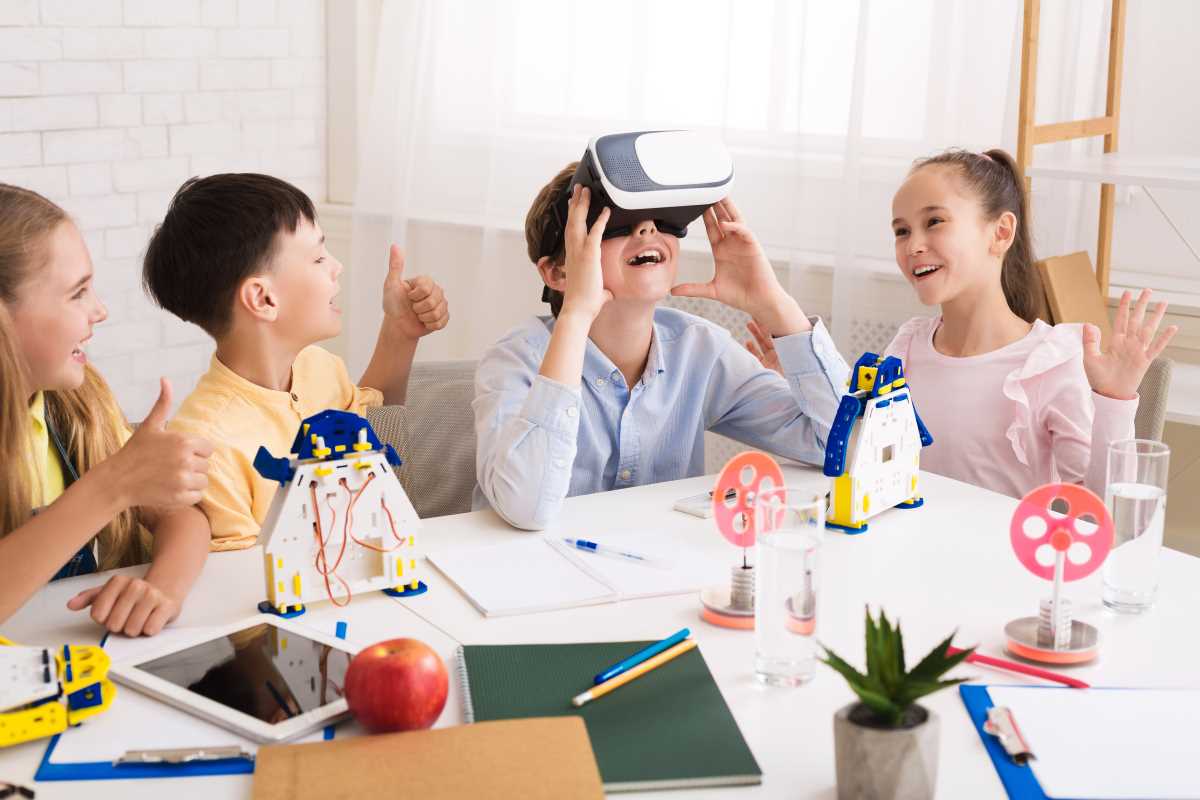Picture yourself entering your science classroom and being greeted by a floating, three-dimensional model of the solar system, or performing a virtual chemistry experiment right from the comfort of your desk. This scenario, which might sound like something out of a sci-fi film, is actually a present-day reality brought to life by augmented reality (AR). AR is revolutionizing the educational landscape, particularly in science classes, by transforming how teachers present their lessons. It creates a dynamic learning environment that captures students' attention, making their educational experiences not only more engaging but also more impactful and memorable.
The Rise of Augmented Reality in Education
Augmented reality has steadily gained traction in educational settings over the past few years. Schools increasingly adopt this technology to enhance traditional teaching methods and provide students with immersive learning experiences.
1. Enhanced Engagement: AR captures students' attention by making lessons more interactive and visually appealing.
2. Improved Understanding: Complex scientific concepts become easier to grasp when visualized in 3D.
3. Accessible Learning: AR allows students to explore subjects at their own pace, catering to different learning styles.
4. Real-World Applications: Students can simulate experiments and scenarios that would be difficult or impossible to replicate in a typical classroom.
5. Collaborative Learning: AR tools often encourage teamwork, helping students develop essential social skills alongside academic knowledge.
Benefits of AR in Science Education
Integrating AR into science education offers numerous advantages that extend beyond mere visual appeal:
- Interactive Learning: Students can manipulate virtual objects, leading to a deeper understanding of scientific principles.
- Immediate Feedback: AR applications provide instant feedback, helping students correct mistakes and learn more effectively.
- Enhanced Retention: The immersive nature of AR aids in better memory retention of the material covered.
- Personalized Education: AR adapts to individual learning speeds and styles, ensuring each student receives a tailored educational experience.
- Accessible Resources: With AR, expensive lab equipment and materials can be virtually simulated, making science education more accessible to all students.
The integration of AR clearly changes the way teachers deliver science lessons, offering unprecedented opportunities for both educators and students.
Challenges of Implementing AR
While AR offers significant benefits, its implementation in educational settings comes with challenges:
- Cost: High-quality AR devices and software can be expensive, posing a barrier for some schools.
- Training: Teachers need adequate training to effectively incorporate AR into their lesson plans.
- Technical Issues: Reliable hardware and software are essential to prevent disruptions during lessons.
- Content Availability: Developing or accessing high-quality AR content tailored to specific curricula can be time-consuming and costly.
Schools can overcome these obstacles by seeking grants or partnerships with tech companies to offset costs, investing in professional development for teachers, and collaborating with developers to create or acquire suitable AR content.
Case Studies and Success Stories
Several educational institutions have successfully integrated AR into their science curricula, demonstrating its potential to enhance learning: One notable example is Greenwood High School, which implemented AR in its biology classes. Students used AR apps to explore the human body, allowing them to visualize and interact with organs and systems in 3D. This hands-on approach led to a significant increase in student engagement and understanding of complex biological processes. Another success story comes from Springfield Middle School, where AR was used in physics labs. By incorporating augmented reality, the school simulated experiments that were previously too hazardous or resource-intensive, enabling students to conduct safe and cost-effective experiments. The use of augmented reality in these labs not only improved learning outcomes but also sparked a greater interest in STEM fields among students.
The Future of AR in Education
Looking ahead, the role of AR in education is poised to expand even further. As technology continues to advance, AR tools will become more sophisticated, affordable, and accessible, making them a staple in classrooms worldwide. Future developments may include:
- AI Integration: Combining AR with artificial intelligence to provide more personalized and adaptive learning experiences.
- Enhanced Collaboration: AR platforms that facilitate real-time collaboration between students and teachers, regardless of geographical locations.
- Cross-Disciplinary Applications: Expanding AR use beyond science to subjects like history, art, and mathematics, creating a more integrated and holistic education system.
- Virtual Field Trips: Offering immersive virtual trips to historical sites, space missions, and scientific research centers, providing students with experiences they might not otherwise have access to.
As AR becomes more integrated into the educational infrastructure, it has the potential to bridge gaps in education quality and accessibility, ensuring that students from all backgrounds can benefit from advanced learning tools.
Augmented reality is undeniably enhancing science education by making learning more interactive, accessible, and effective. While challenges exist regarding its implementation, the benefits it offers to both students and educators are substantial. As AR technology continues to evolve, it holds the promise of further changing the way teachers deliver science lessons, paving the way for a more engaging and comprehensive educational experience.







